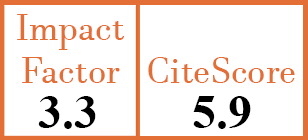Full Papers
Drug-induced osteoporosis/osteopenia: a pharmacovigilance analysis using the FDA Adverse Event Reporting System database
Y. Wang1, G. Huang2, X. Fu3, Z. Wang4, W. Mao5, G. Zheng6
- Department of Endocrinology, Shangrao Hospital affiliated to Nanchang University, China.
- Department of Endocrinology, Shangrao Hospital affiliated to Nanchang University, China.
- Trauma Center, Shangrao Hospital affiliated to Nanchang University, China.
- Trauma Center, Shangrao Hospital affiliated to Nanchang University, China.
- Trauma Center, Shangrao Hospital affiliated to Nanchang University, China.
- Graduate School of Jiangxi Medical College, Nanchang University; and Trauma Center, Shangrao Hospital affiliated to Nanchang University, China. 360014230040@email.ncu.edu.cn
CER19339
Full Papers
PMID: 41196268 [PubMed]
Received: 22/09/2025
Accepted : 17/10/2025
In Press: 29/10/2025
Abstract
OBJECTIVES:
Drug-induced osteoporosis/osteopenia (OP/OPN) has emerged as a significant public health concern affecting bone health. However, the risk assessment of OP/OPN induced by various drugs remains incompletely understood, necessitating large-scale real-world data analysis to clarify the associated risks. The present study aims to systematically analyse OP/OPN-related adverse events (AEs).
METHODS:
This study utilised the FDA Adverse Event Reporting System (FAERS) database to identify OP/OPN-related adverse event reports from 2004 to 2023. Disproportionality analysis, including the reporting odds ratio and proportional reporting ratio, was applied to evaluate the signal strength of OP/OPN associated with different drug categories. Additionally, the study analysed drug classifications, time-to-onset, and trends over time.
RESULTS:
Among the 43,685 OP/OPN-related reports, anti-retroviral drugs accounted for the highest proportion of reports (20.73%), with a gradual annual increase in reporting frequency (average annual growth rate of 2.20%). This was followed by immunomodulatory/immunosuppressive agents (12.76%), proton pump inhibitors (6.25%), and hormone-related (2.88%). A significant variation was observed in the time-to-onset of OP/OPN-related adverse event among different drug categories: glucocorticoids-induced osteoporosis occurred earliest (median time-to-onset of 164 days), while anti-retroviral drug-induced osteoporosis had the longest time-to-onset (median of 1,508 days). Regarding reporting frequency, tenofovir and its combinations, esomeprazole, adalimumab, methotrexate, medroxyprogesterone, interferon beta-1A, etanercept, and rituximab were the most frequently reported drugs. In terms of signal strength, tenofovir and its combinations, adefovir, pamidronic acid, and esomeprazole the strongest signals, suggesting that these drugs may represent key risk factors for OP/OPN.
CONCLUSIONS:
This FAERS-based study identified multiple drug classes associated with OP/OPN-related adverse event signals, with anti-viral drugs – particularly tenofovir disoproxil and its combination therapies – exhibiting the strongest signal. Although glucocorticoids had a lower reporting proportion, their short onset time underscores the need for vigilance. These findings provide real-world evidence for drug safety management and highlight the necessity of bone health monitoring in long-term medication users. Future studies should integrate clinical data to validate these findings and explore underlying mechanisms.



